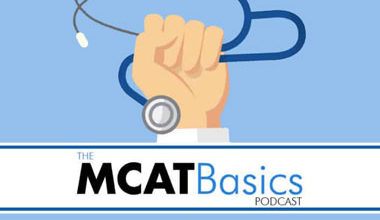The MCAT Basics Podcast with Sam Smith of MedSchoolCoach covers many topics on the AAMC MCAT. Each podcast covers a different topic, and up to 3 of the 4 MCAT sections. Lesson topics are based on the practice material, including practice tests, question banks.
Biomolecular structure is the intricate folded, three-dimensional shape that is formed by a protein, DNA, or RNA molecule, and its function. The structure of these molecules is frequently decomposed into primary structure, secondary structure, tertiary structure and quaternary structure. The four main categories of biomolecules are carbohydrates, lipids, proteins and nucleic acids. While there are some special cases to be found, these four molecules make up the bulk of living bodies, and each plays an essential role in regulating the body’s chemistry. Biomolecules are important for the functioning of living organisms. These molecules perform or trigger important biochemical reactions in living organisms. When studying biomolecules, one can understand the physiological function that regulates the proper growth and development of a human body. Enzymes are biological proteins. They are catalysts and help speed up chemical reactions within the body. Different enzymes work best at different temperatures and pH levels. For example, pepsin in the stomach will work better at a lower pH than an enzyme found in the pancreas, such as amylase
Lipids are responsible for energy storage in a cell and are the major component of the cell membrane. Among all these biomolecules, I would pick nucleic acids as the most important for life. There are two types of nucleic acids: DNA (deoxyribonucleic acid) and RNA (ribonucleic acid). Tertiary structure is important for enzyme functionality because it spatially connects all the functional pieces of a protein together to perform a task, usually, a very specific task connected to that level of structure
[01:39] Introduction to the show and topics today [04:23] Carbon rings [11:34] Signal transduction pathway [17:23] Steroid molecule structures [22:29] Osteoclast differentiation [25:39] Structure of glucose, the linear form, and also the ringed form [31:39] Nucleotides are the building blocks of these nucleic acids [35:20] Glycosidic bonds. [39:43] Amphiphilic characteristicsQuotes:
“Biomolecules perform or trigger important biochemical reactions in living organisms. When studying biomolecules, one can understand the physiological function that regulates the proper growth and development of a human body.“

